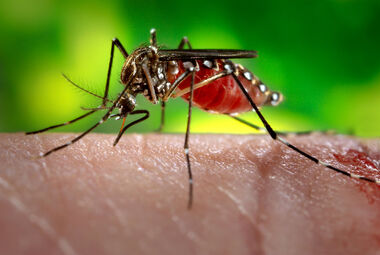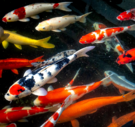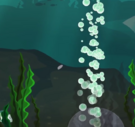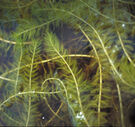
When you think about West Nile Virus, you may only think about how it is plaguing developing countries in Africa. But West Nile is very present in North America as well, and is affecting many humans and animals. West Nile is spread through mosquito bites, one of the most prevalent and pesky insects on the planet. West Nile spreads like wildfire and the scariest part is that 70-80%** of people who become infected don’t experience any symptoms, and can further contribute to the spread of the virus. But to those who do experience symptoms of the virus, the effects can range from mild to deadly.
There is no unique treatment or cure for victims of West Nile virus, only treatment for the patients’ symptoms. Symptoms of the virus include: headache, fever, nausea, vomiting, body ache, body rash, stiff neck, difficulty swallowing, and confusion**. For mild cases, treatment could take a week. But for the more severely infected, patients could suffer for months, or years; and some cases even fatality.
So how can we defend against this deadly virus? The disease is transmitted through the bites of an infected mosquito to humans and animals, so the best way is to avoid getting bitten. Covering exposed skin with clothing and nets and using insect repellent are common methods, but it doesn’t get to the root of the problem. Reducing the population of mosquitos is the best thing you can do to protect your area from the spread of West Nile.
Mosquitos breed by laying eggs in stagnant waters. Bodies of water as small as a bottle cap and as large as a lake can all be at risk to harbouring mosquitos. Anyone with water on their property is at risk from the months of April to October, but there are many methods to reduce the risk in your own back yard. By eliminating stagnant bodies of water, you can leave the mosquitos with limited options for breeding. Drain off water collecting in flower pots, old tires, barrels, or anything else in your yard, clean eavestroughs regularly to prevent clogs that trap water, and replace water in pet dishes, bird baths, etc. at least twice a week. The larger the body of stagnant water, the more at risk the area is of mosquito infestation.
For larger bodies of water the solution may seem less simple, as you can’t just drain or replace the water in a back-yard pond or lake. However, there are ways to reduce breeding in these waters as well, and its simpler than you think. Mosquitos instinctively lay their eggs in stagnant waters because a clean and clear healthy body of water is likely to contain fish, and fish feed on mosquito larvae. You can tell if your water is at risk if it is still with no movement, has a murky brown or green colour, or contains algae and weeds.
Not to worry, there is a safe and environmentally friendly solution to treat water at risk. Nature’s Pond Care, powered by Koender’s Water Solutions, has a three-step program that is proven to make water clean and clear without harming the environment.
Step 1: Renew your pond with Nature’s Pond Conditioner, a natural blend of bacteria and enzymes, that cleans and clears water by breaking down the muck and sludge.
Step 2: Revive your pond with bottom up aeration to oxygenate and create movement in the water.
Step 3: Remove unwanted weeds to clear the pond.
These three steps will leave your water clean and clear, no longer making it an attractive breeding ground for mosquitos. To further ensure your success in reducing the mosquito population, add surface aeration like a water fountain that could create enough motion to make laying eggs even more difficult. You can also stock the body of water with fish who will eat the mosquito larvae.
By acting on these prevention strategies to reduce mosquito populations on your property and educating those around you about the dangers of West Nile, you can reduce the risk of contracting the virus for yourself, your family, and your livestock. But, we can’t do it alone. Share this article with your friends and neighbours to alert them about the risks, and encourage action. We have the knowledge and tools to protect our communities, if everyone is to do their part we can reduce the risk together.
**For more information on West Nile Virus go to:
This blog discusses pond issues and solutions for Homeowner Associations.

This blog discusses the history of koi, tips and care suggestions, and how to keep a koi pond clean and clear.

Aeration Systems and the Benefits of Bottom UP Aeration…
A quick look at how Nature's Pond Conditioner works for your pond!

What is an Ecosystem? “An ecosystem is a geographic…